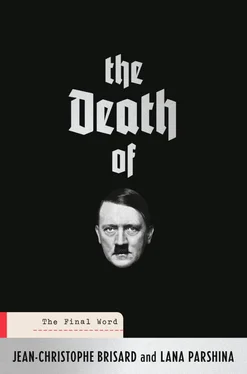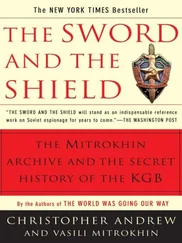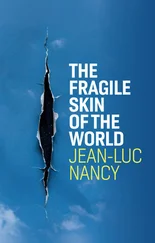It’s just after 5:00 pm. Our patience has paid off at last. Right in front of our eyes a stiff cardboard box has just been opened. Inside, there it is, very small, delicately preserved in a casket.
“So is that him? Is it really him?”
“Da!”
“Yes, she’s saying yes.”
“Thank you, Lana. And that’s all that’s left?”
“Da!”
“You don’t need to translate, Lana.”
Looking more closely, the casket is very like a box for computer disks. In fact that’s exactly what it is. Hitler’s skull is preserved in a disk box! To be precise, it’s a piece of skull presented by the Russian authorities as being Hitler’s. Stalin’s trophy! One of the best-guarded secrets in the Soviet Union and then in post-Communist Russia. And for us, the end of a year of waiting and investigation.
You need to imagine the scene to understand the strange feeling that comes over us. A rectangular room big enough to hold about ten people. A table, rectangular too, in dark lacquered wood. On the wall, a series of drawings under glass, with red frames. “Original posters,” we are told. They date from the Revolutionary era. The Revolution, the big one, the Russian one, the one organised by Lenin in October or November 1917, depending on whether you follow the Julian or the Gregorian calendar. They show proud workers with concave stomachs. Their powerful arms hold a scarlet banner up to the world. A capitalist, an oppressor of the people, crosses their path. How can you tell he is a capitalist? He is wearing a very smart suit and a top hat and has a big fat paunch. He exudes smugness, the smugness of the powerful in the face of the weak. In the last poster, the man with the hat has lost his pride. He is lying on the ground on his back, his head crushed by the worker’s huge hammer.
That perennial symbol. However powerful you might be, you will end up crushed, your head smashed in by the resistance of the Russian people. Had Hitler seen these drawings?
Too bad if he had, because the Russians got him in the end. Or at least they got his skull.
But let us return to the description of the scene.
This little room, this conference room with its hints of revolution, is on the ground floor of GARF, just beside the secretaries’ office where we waited patiently for the return of the director, Larisa Alexandrovna Rogovaya. That opulent woman in her fifties doesn’t just impress her interlocutors with her imposing physical presence. Her sense of calm and her natural charisma distinguish her from the run of Moscow functionaries. Back from the Kremlin, she had passed through the secretaries’ office. Without seeing us. Lana and I had taken our seats in the only two armchairs in the room. An enormous potted plant stood between them, and generously invaded the little space remaining to us. Even if you concentrated very hard, even if you were in a terrible hurry, it was impossible not to notice the presence of two human beings around the giant ficus. It was 4:00 pm at that point. We had leapt to our feet; hope was returning. The telephone had just rung. “In the next room? The conference room? In thirty minutes…” The nice secretary repeated the orders given to her into the receiver. Lana leaned towards me with a smile. It was for us.
In silence, the director had sat down at the end of the big rectangular table. On either side of her, standing to attention, stood two clerks. On her right, a woman old enough to have laid claim to a well-deserved pension. On her left, a man with a sepulchral appearance straight out of a Bram Stoker novel. The woman’s name was Dina Nikolaevna Nokhotovich, and she was in charge of the special collections. The man’s name was Nikolai Igorevich Vladimirsev (he prefers Nikolai); he is head of the department of document preservation at GARF.
Nikolai had set a large cardboard box gently in front of the director. Dina helped him lift the lid. Then they stepped back, hands behind their backs, and focused their eyes on us. An attitude intended as a warning by these two sentries, who were ready to intervene if necessary. Larisa, still seated, put her hands on either side of the box as if to protect it, and invited us to look inside.
It was a moment we had stopped hoping would happen. That bit of skull had seemed inaccessible only that morning. After months and months of interminable negotiations, repeated demands formulated by email, by regular mail, by telephone, by fax (well yes, still often used in Russia), in person with stubborn officials, here we were at last looking at this human fragment. The remains of a cranial box, a good quarter of one, to the naked eye, from the back left part (two parietals and a bit of occipital, to be precise). The object of so much greed on the part of historians and journalists from across the world. Is it Hitler’s, as the Russian authorities claim? Or does it belong to a woman in her forties, as an American scientist recently asserted? To ask that question within the GARF fortress is to talk politics, to cast doubts on the official word of the Kremlin. An option unimaginable to the director of the archives. Absolutely unimaginable.
Larisa Rogovaya has only been the director of GARF for a few days. She has replaced the former director, Sergei Mironenko. An oh-so political and sensitive position in this Putin-era Russia. In our presence, Larisa Rogovaya weighs each word. She is the only one who answers our questions, the two clerks don’t get to say a word. Always concise, two or maybe three words, and that face, in a permanent state of tension. The senior official already seems to regret granting our request. To be precise, she hasn’t granted anything at all. The order to let us study this bit of skull comes from someone higher up than her. How high exactly? Hard to guess. From the Kremlin? Most definitely. But who at the Kremlin? Lana is convinced that it all comes straight from the President’s office. As in the days of the Soviet Union, the State Archives have once again become an effectively secret place. On 4 April 2016 Vladimir Putin signed a decree stipulating that the management, publication, and declassification of the archives, and access to them, fell directly within the remit of the President of the Russian Federation, meaning Putin himself.
The end of the period of open access to historical documents that began under Boris Yeltsin. Exit the charismatic director of GARF, Sergei Mironenko, a friend to many foreign historians and advocate of almost free access to hundreds of thousands of historical pieces in his institution. “Fewer commentaries, more documents. The documents must speak for themselves,” was the refrain he liked to give by way of reply to his colleagues, surprised by this open-door policy. It’s over! Mironenko has gone. His twenty-four years of good and true service as director of GARF changed nothing. With a stroke of the pen, the Kremlin demoted him. He wasn’t fired, he wasn’t retired (at sixty-five he would have been due to retire anyway), he wasn’t moved to a different service–he was demoted. Humiliation was added to disgrace because, of course, the new director is none other than his former subordinate, our dear Larisa Rogovaya. Stalin couldn’t have done better.
Putin’s decree dates from 4 April 2016. And we are standing in front of the box with that piece of skull on 6 April 2016. The thought that Larisa Rogovaya would give a lot to get rid of us doesn’t take away the feeling of paranoia. Her whole body cries out her aversion towards us, her fear of ending up like Mironenko. Then, when we ask if we can take the diskette case from the cardboard box, the tension in the little room immediately goes up a notch. Larisa turns towards her two sentries. A brief confabulation ensues. Nikolai shakes his head disapprovingly. Dina picks up a piece of paper at the bottom of the cardboard box, adjusts her little glasses, which give her a sly look, and walks over to Lana.
Читать дальше












